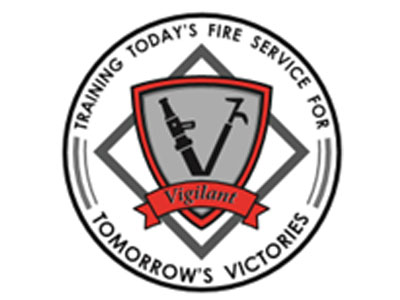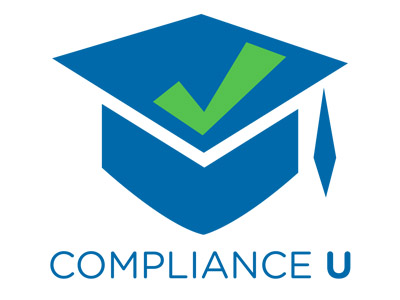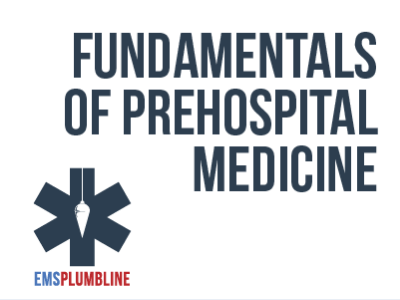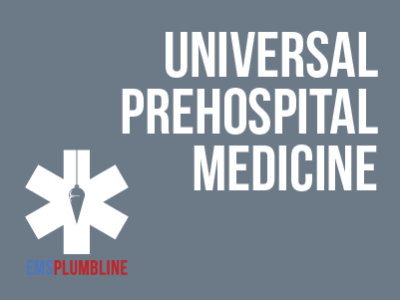 |
Size-up Introduction #1412 (Instructor Guide) |
1.00 |
This is the Instructor Guide for Lesson #1412 Size-up. This instructor guide provides the instructor with lesson background, key points, and delivery methods. Required lesson materials including lesson plan, presentation, and evaluation quiz with answer key. The lesson is also accompanied by a learning aid that can be used a handout to lesson participants. Included in this guide is an explanation video of the presentation that describes each slide of the lesson. |
 |
Providing Homework Support: Types of Homework Support |
1.00 |
Research indicates there are many different ways to provide effective homework support in school-age programs. When planning a homework support program, it is important for school-age programs to develop a homework philosophy that is consistent with the program’s overall philosophy, and reflects current research on best practices for providing homework help. The homework philosophy should also reflect the needs of parents and children in the program, and strike a balance between homework needs and other experiences that help children grow and learn out-of-school. In this course, we will explore the various types of homework support. |
 |
Conflict and Communication: Why Can't We Be Friends? |
1.00 |
Conflict occurs when we are in relationship with others. In fact, the hallmark of a healthy relationship is not the absence of conflict, but the ability to successfully resolve it. Unfortunately, resolving conflict is not a skill many of us were taught. We'll explore the fundamental causes of conflict and the dynamics that can escalate conflict. Finally, we’ll cover the tools necessary to navigate conflict successfully, including effective communication strategies. |
 |
Adult and Child CPR (Corrections) |
2.00 |
In this course, you will learn how to properly perform Adult and Child CPR that may someday enable you to save someone's life. |
 |
Overview of Enforcement for Occupational Exposure to Tuberculosis (TB) |
0.50 |
This course covers a brief overview of OSHA’s enforcement policy for occupational exposure to tuberculosis. OSHA’s tuberculosis policy is found in CPL 02-00-106 – CPL 2.106 – Enforcement Procedures and Scheduling for Occupational Exposure to Tuberculosis. |
 |
Preventing Sexual Harassment and Understanding California Law |
0.50 |
This course will teach California employees how to recognize sexual harassment, defines the rights and responsibilities of employers and employees, and provides an overview of the legal remedies available in sexual harassment lawsuits. |
 |
Managing Performance: Legal Appraisals (Instructor Guide) |
0.84 |
In this course you will learn to: identify legal appraisals and responsibilities in relation to laws enforced by the EEOC, and identify risks of legal challenges and the importance of maintaining positive communication. |
 |
Permit-Required Confined Spaces |
1.00 |
This course covers the safety basics while working in permit-required confined spaces. You will learn the differences between a confined space and a permit-required space, as well as how to identify potential hazards in confined spaces and the safeguards that go along with them.
|
 |
Iceberg Thinking |
0.25 |
This course covers the fundamentals of iceberg thinking. Iceberg thinking is about questioning the world around you. Whether you’re a teacher, student, or self-directed learner, this course explores ideas about everyday life that everyone can relate to. Iceberg thinking is just one of many courses we offer. This course will help you learn about what iceberg thinking is and how it can help you see things differently in your day-to-day life. |
 |
Project Management - Basic: Scope Definition, Verification, and Change Control |
1.50 |
This course will cover how to identify the process and benefits of scope definition and verification, and develop a work breakdown structure (WBS) and work package. You will also learn how to identify the types of information that stakeholders need in order to verify a project’s scope, and determine the timing of scope verification. You will be able to better understand how to control changes in project scope, identify the benefits of a scope change control system, and describe why it’s important to create a project database. |
 |
GED: Reasoning Through Language Arts - Unit 7: The Extended Response |
1.00 |
Welcome to Unit 7: The Extended Response. The last part of the RLA section is the Extended Response, or essay. Here's how it works. You'll be given something to read - a source text or texts - and asked to write an essay in response to a prompt related to the reading. In this unit, we'll learn about two types of essays and take a look at an example of each one. |
 |
Understanding the CDA Credential and Process (CDA 6) |
2.00 |
This course introduces the CDA Credential™, a nationally recognized pathway for early childhood professionals to bolster their knowledge, hone their skills, and advance their careers. Explore the CDA process, its diverse pathways, and its potential alignment with your professional development goals. Discover how well-equipped caregivers, empowered by the CDA, contribute to nurturing environments that foster optimal learning and development for young children. |
 |
Business Ethics: Whistle-Blowing (Instructor Guide) |
0.75 |
In this course you will learn to: identify criteria for whistleblowing and the risks associated with it, and identify when and how to blow the whistle. |
 |
Combating Sexual Harassment in the Workplace (NY) |
1.00 |
In recent years, the topic of sexual harassment in the workplace has been brought into the national spotlight, bringing with it renewed awareness about the serious and unacceptable nature of these actions and the severe consequences that follow.
Under state law effective October 2018, every employer in New York is required to establish a sexual harassment prevention policy which includes annual training, pursuant to Section 201-G of the Labor Law.
This course was created by CypherWorx based on the 2023 update of the training materials developed by the New York State Department of Labor and Division of Human Rights, and is designed to meet or exceed standards required by state law. |
 |
Managerial Leadership: Defining Employee Roles and Priorities (Instructor Guide) |
1.50 |
A vision is created by an organization to inspire its members to work together to reach for an ideal of what the organization can become. The members of the organization should use the vision as the standard to determine the day-to-day functions of their individual roles. The vision is the guide to use every time an action is taken, a decision is made, or a plan is developed to improve the organization or the people in it. An organization’s vision should enable the members in every role to do what is in the best interest of the organization.
In this course you will learn to: determine leader roles and strengthen employee roles, and align employee priorities and evaluate employee performance.
This Instructor's Edition of this course includes notes and suggestions to assist you in presenting the material, whether in an in-person classroom setting or as an instructor-led online or distance-learning course. It also provides you with the answers to questions found in mid-lesson activities, as well as in the quiz that concludes the course. |
 |
Moderate to Vigorous Physical Activity (MVPA) (CDA 2) |
2.00 |
This course tackles the sobering reality that 25% of children lack enough moderate-to-vigorous physical activity (MVPA) in their daily lives. It explores the crucial role MVPA plays in fostering healthy habits, happiness, and overall well-being. Discover evidence-based strategies to ignite movement in children, empowering them to develop strength, maintain a healthy weight, and cultivate lifelong vitality. |
 |
Quality Management: The Costs Of Quality |
0.50 |
Before the quality revolution that began in the United States in the 1980s, quality was frequently viewed as a goal that came at a higher price for production. However, the reality is that poor quality is a result of the ineffective use of resources, including wasted material and labor. Therefore, improved quality means better use of resources and lower costs.
In this course you will learn to: identify the relationship between quality and cost, the benefits of establishing quality requirements, management’s responsibilities for achieving conformance, and the costs of customer dissatisfaction. |
 |
Building Upward: Pulse Oximetry for BLS Providers |
1.00 |
Pulse oximetry is a tool that can give a medic a great deal of insight into the patient's condition. Paramedic Instructor Peter Bonadonna does a fantastic job of illustrating the fundamental issues that surround pulse oximetry readings and how they should be interpreted. Final Exam: This multiple-choice exam is designed to test your knowledge of the material you just reviewed. You have two attempts to gain an 80% or higher on this exam. Please take your time and answer each question carefully. |
 |
Bedrock: Therapeutic Communications for EMS |
1.00 |
The topic of therapeutic communications relates to nearly every EMS response and is especially important for high-acuity situations. Elizabeth C. Shannon, EMT, MS, RN, PMHNP-BC, brings her years of experience as a mental health care provider and an EMT to the table in this insightful discussion. As you hear her navigate the questions posed, we hope that you will confirm what you are already doing well. We also hope that your reflection on the subject will lead to improved EMS responses for you and the other medics on your crew.
Final Exam: Please read each question carefully. You will have two attempts to gain a 75% or higher on this exam. If you are not successful in two attempts, you are welcome to take the course again to gain the certification. |
 |
I Belong: Supporting Social Awareness and Interpersonal Skills |
2.00 |
We all have lived full lives with varied experiences, both positive and negative. Whether we are aware or not, our experiences, including our social, political and cultural beliefs and background, affect our practice with youth. During this course, participants will learn about how culturally grounded beliefs and background affect our practice with youth, how to help raise our awareness of those factors, and reflect on current and new strategies that support the development young people’s social-awareness and interpersonal skills. |
 |
Advanced Interpersonal Communication: Communication Styles and Methods (Instructor Guide) |
0.75 |
To be successful in the workplace, you must be able to effectively communicate and cooperate with clients and co-workers. Learning about the four types of communication styles helps a listener understand a speaker’s perspective. It also helps a speaker understand how their communication affects the listener.
In this course you will learn: to identify primary and secondary communication styles, and to communicate using various verbal and nonverbal modes of communication.
This Instructor's Edition of this course includes notes and suggestions to assist you in presenting the material, whether in an in-person classroom setting or as an instructor-led online or distance-learning course. It also provides you with the answers to questions found in mid-lesson activities, as well as in the quiz that concludes the course. |
 |
California Harassment Prevention Training for Team Members |
1.00 |
Harassment cases have resulted in organizations being liable for hundreds of millions of dollars in legal fees and lost revenue annually. The information presented here enables employees in the organization to create a harassment-free culture. |
 |
Coaching: Communication (Instructor Guide) |
1.00 |
Language is an important coaching tool. The use of suitable words during coaching will help you create relationships, repair employee confidence, and establish plans for employee success. As a coach, you must select words that directly influence your employees’ attitude, behavior, and performance. The use of appropriate language during your coaching sessions will help you convey your messages in a clear and encouraging manner.
In this course you will learn to: clearly express your message by using appropriate language, identify and use nonverbal methods of communication, and receive the desired information by asking effective questions.
This Instructor's Edition of this course includes notes and suggestions to assist you in presenting the material, whether in an in-person classroom setting or as an instructor-led online or distance-learning course. It also provides you with the answers to questions found in mid-lesson activities, as well as in the quiz that concludes the course. |
 |
Forklift: Material Handling |
0.75 |
This course covers topics and techniques related to safe forklift operation and material handling. |
 |
Sales Skills: Advanced: Developing a Winning Strategy |
0.50 |
This course will focus on examining consulting strategies and developing solutions for clients. |


























